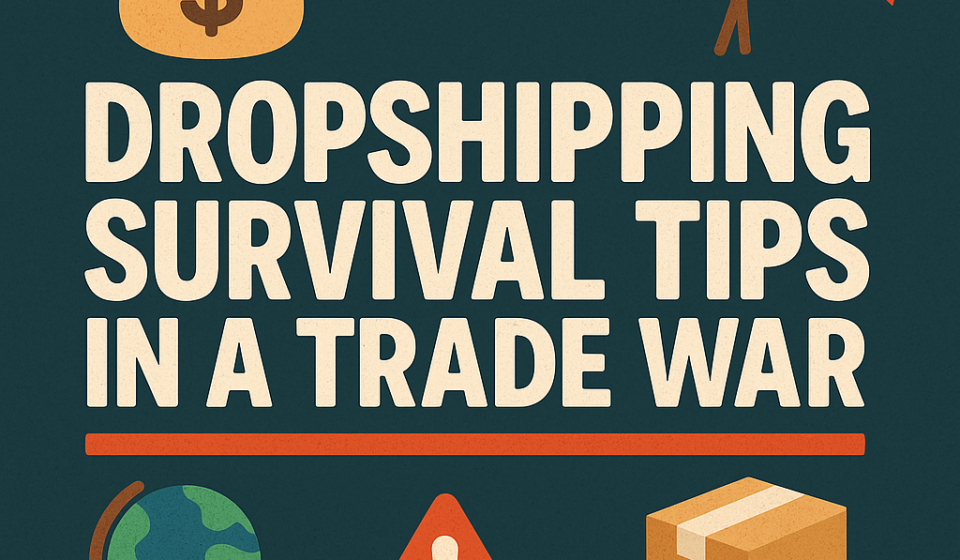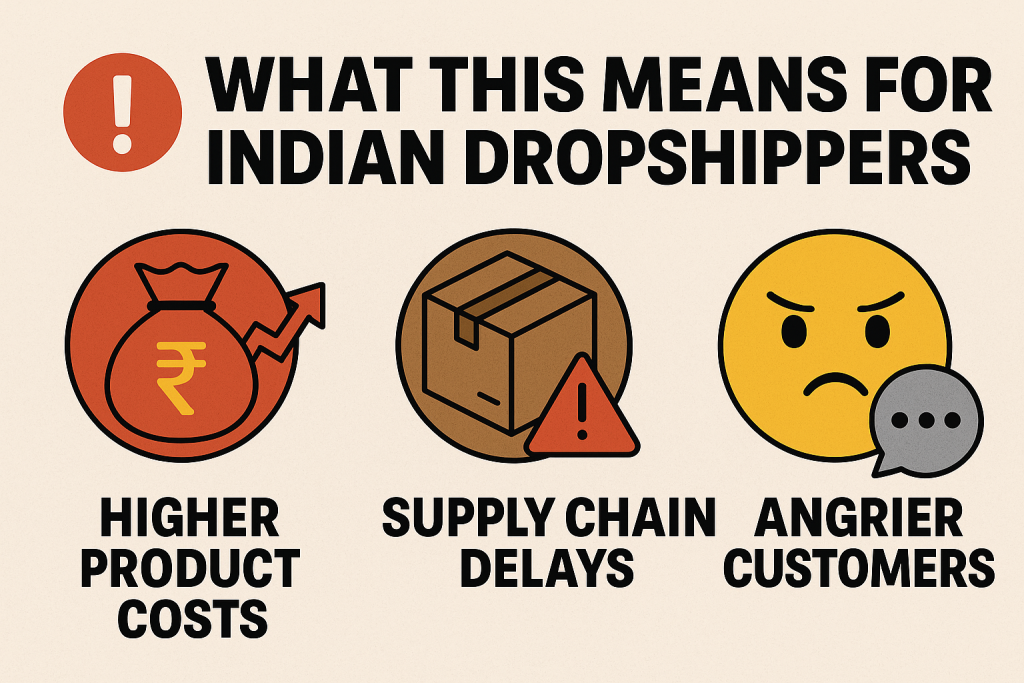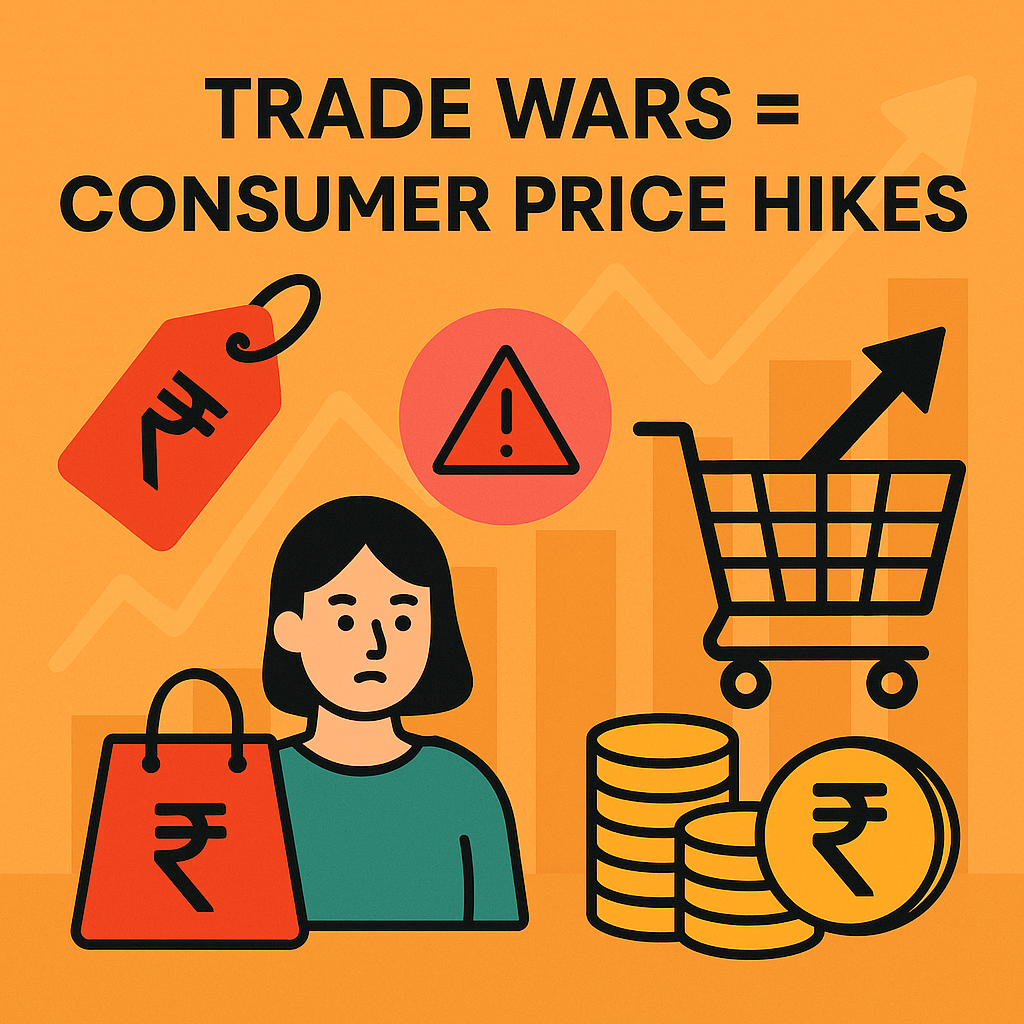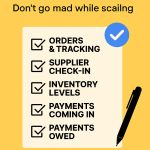
Tariffs for Dropshippers: Understand May 2025 Tarrifs and Protect Your Profits
Understanding these tariffs for dropshippers is very crucial as on April 2nd, Trump dropped a bombshell with his “Liberation Day” tariffs — basically trying to reboot U.S. factories and hit back at countries like China. His message? Enough of cheap imports, now let’s make America manufacture again. For us in dropshipping, as this move isn’t just politics — it’s a direct shake-up of how we source, ship, and price our products.
Table Of Content
Firstly, China took the biggest hit slapped with a brutal 145% import tariff, while the rest of the world move on easier with a flat 10% base rate. But hold up as of May 12, 2025, things cooled down a bit. There’s now a 90-day “truce” between the U.S. and China. Both sides agreed to drop tariffs temporarily China went from 145% to 30%, and the U.S. brought theirs down too. It’s like a timeout in a trade war, but let’s be real — it’s just a pause, not peace. If talks break down again, those crazy-high tariffs could be back in play before you know it.
- China’s tariff drops temporarily to 30%
- U.S. imports into China drop to 10%
This relief is short-term. If talks fail, tariffs will spike again. As a dropshipper relying on Chinese suppliers, that 90-day window is your time to adapt.
What This Means for Indian Dropshippers : Tariffs for Dropshippers

Indian sellers targeting the U.S. or importing from China should be thinking about two big shifts:
1. Product Costs Just Changed Overnight
If your product or even raw materials are coming from China — whether you’re sourcing through Temu, 1688, or using any agent — your actual landed cost is about to blow up. We’re talking a 30–50% jump, easily.
And it’s not just the big-ticket orders getting hit now. Even those ₹300–₹500 test orders you used to sneak in under the radar? Gone. That old de minimis loophole (which let low-value parcels pass without duty) — it’s officially dead.
Now, everything gets taxed. Doesn’t matter if you’re importing a single hair curler or bulk kitchen gadgets — customs is watching, and your cost per unit just got heavier.
That means:
- Lower margins
- Slower fulfillment
- More customer price sensitivity
So if you’re still blindly copying TikTok trend stores sourcing from China — it’s time to fix that strategy fast.
2. Shipping Disruptions Are Coming
Right now, there’s a full-blown global scramble to push inventory before those tariff deadlines hit. Importers, agents, and suppliers — everyone’s in panic mode, rushing shipments like it’s Black Friday. And what does that mean for us?
🚨 Courier delays.
🚨 Customs backups.
🚨 Frustrated customers blowing up your support.
If you’ve built your brand around fast delivery — 4-6 day fulfillment promises, quick COD drop-offs, same-week shipping — this can hit hard. Your margins could get crushed if you have to refund shipping, offer discounts to calm complaints, or worse, deal with bad reviews and return requests.
So don’t take this lightly.
👉 Start tracking your delivery timelines more aggressively.
👉 Communicate clearly on your store: “Delivery may take 7–10 days” (better to underpromise and overdeliver).
👉 Prep a support script and use WhatsApp automation to handle the flood if things slow down.
In this game, perception is everything — so control the narrative before it turns into refund city.
Time to Rethink Your Strategy (Real Talk for Indian Dropshippers)

If you’re dropshipping right now and still playing by 2023 rules — you’re gonna get wrecked. With these new tariffs and constant trade drama, With these new tariffs for dropshippers and constant trade drama ,it’s time to pivot smart. Here’s how you stay ahead and protect your margins in this chaos:
✅ Start Diversifying Beyond China (Like, Right Now)
Depending entirely on Chinese suppliers? That’s a time bomb. Start looking at countries like India, Turkey, UAE, or even domestic U.S. wholesalers (like AutoDS U.S. warehouse). Yes, you might pay a bit more upfront — but you dodge insane 145% tariffs, reduce customs delays, and actually get faster shipping.
Translation? Less drama, better customer experience, and fewer refund headaches.
✅ Go Lean with Low-Tariff or Digital Products
If you want cleaner margins and zero customs stress, this is the play. Try:
- Print-on-demand with U.S./EU-based suppliers — no bulk inventory, no China involvement
- Digital info products — eBooks, checklists, templates… pure profit, instant delivery
- India-made home decor or wellness goods — low tariffs, local flavor, fast turnaround
You stay agile, and your store becomes tariff-proof.
✅ Review Products with a “Tariff Lens” — No More Blind Imports
You can’t just pick products based on vibes anymore. Before you list anything, ask yourself:
- Is this product tariff-heavy?
- Can I get a similar version locally or from a better trade partner?
- Will my margins still work if shipping or duties spike 20-30%?
If the answer is no — drop it. Stay away from bulky electronics, appliances, or anything that’s logistically painful to move. They’re price-sensitive and way too risky in this climate.
🧠 Bottom line? Dropshipping in 2025 isn’t about finding “cool products” — it’s about smart sourcing, clean logistics, and future-proof margins. Adapt now, or you’ll get crushed later.
Trade Wars = Consumer Price Hikes (And More Headaches for Indian Dropshippers)

Look, even if you aren’t sourcing from China, your customers are feeling the heat. Prices of everyday goods are going up — and a significant contributing factor to this is the ripple effect of tariffs for dropshippers and other import duties. When stuff gets expensive, people start behaving differently.
Here’s what that looks like for us dropshippers:
- COD returns shoot up because buyers feel regret or irritation
- Buying decisions slow down — people wait, compare, hesitate
- Discount-hunting kicks in — they want “more for less” every time
And in this mood, one bad user experience and boom — you’ve lost that customer forever.
🛡️ How to Stay Safe & Profitable in This Mess (Real Checklist for Indian Dropshippers)
If you want to survive 2025’s trade drama without burning your ad budget or drowning in returns — here’s the playbook you follow:
✅ Source from India first
Indian suppliers = faster delivery, easier communication, no tariff panic. Always check if there’s a local version of the product before going global.
✅ Use COD + Prepaid hybrid checkout
Don’t go all-in on one. Give your customers both options — trust takes time, and prepaid push alone can kill conversion early on.
✅ Add WhatsApp chat buttons everywhere
Website, thank-you page, emails — everywhere. Instant trust boost, and people feel safe knowing support is one message away.
✅ Retarget smartly: Meta Ads + WhatsApp Broadcasts
Don’t just blast new ads blindly. Set up retargeting for your add-to-carts and COD drop-offs using Meta. Follow up via WhatsApp to close those half-convinced buyers.
✅ Don’t chase random trends
Focus on building AOV. Sell complementary bundles. Push repeat purchases. Trends will fade — good customers won’t.
✅ Build brand recall, not just sales
Anyone can run a ₹500/day ad and get a sale. But can you make someone remember your brand a week later? That’s what matters. Use solid storytelling, consistent design, and local language to feel familiar.
🧠 Final Thoughts: Think Long-Term, Not Just for the Month

Tariffs will rise, drop, rise again — forget chasing loopholes or “quick hacks.” If your entire store collapses because of supplier price hikes driven by tariffs for dropshippers, you’re not running a business. You’re gambling.
You need systems — strong product sourcing, trust-building assets, logistics backups, and a brand people remember.
This isn’t the time to panic. This is the time to pivot smart, tighten strategy, and outlast everyone stuck in 2023 thinking.
While tariffs for dropshippers impact sourcing, offering COD can boost sales in India. Discover How with this 2025 guide to Cash on Delivery dropshipping.





